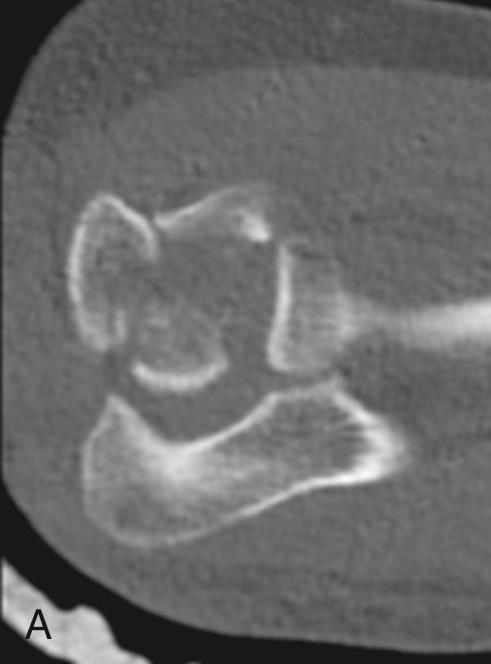Physical Address
304 North Cardinal St.
Dorchester Center, MA 02124
Isolated fracture of the capitellum is discussed in detail in Chapter 46 . Fractures primarily involving the articular surface of the capitellum and trochlea are often shearing in nature and involve fracture of the lateral epicondyle and impaction of the posterior lateral column and the posterior and medial trochlea. On occasion, the injury can extend to the medial column and result in fracture of the medial epicondyle or injury to the medial collateral ligament. In addition, some capitellum/trochlea fractures can be part of a complex elbow fracture-dislocation including those with complex open wounds.
These fractures can be challenging to repair by virtue of (1) small articular fragments, (2) limited subchondral bone, (3) multiple fragments, (4) impaction fracture of the posterior part of the lateral column and the posterior trochlea, and (5) fracture of the medial epicondyle. Involvement of the posterior humerus is associated with nonunion.
The patient's functional demands and overall health influence treatment as much as the fracture pattern and complexity. Lower limb injuries and the need for weight bearing through the upper limb for ambulation are important factors to consider.
Computed tomography with three-dimensional reconstructions is helpful in understanding fracture elements, and there is some evidence that it can improve the reliability of diagnosis of certain fracture characteristics ( Fig. 47.1 ).

Fracture characteristics to evaluate at the time of imaging are (1) posterior or medial trochlear involvement, (2) impaction of the lateral column, (3) impaction of the posterior trochlea, (4) fracture of the lateral epicondyle, and (5) fracture of the medial epicondyle. Impacted fracture fragments are important to recognize: these fragments are out of position but may not appear fractured in surgery because they are not easily moved and the fracture lines are not obvious. It may not be possible to fully reduce all the fracture fragments until these impacted elements are realigned.
In general, displaced fractures of the capitellum/trochlea benefit from operative intervention. If the patient is medically unstable, closed reduction may be attempted by extending the elbow using the method described by Ochner et al. This reduction technique is also useful for arthroscopic-assisted open reduction internal fixation.
The timing of surgery is dictated by the quality of the skin envelope and the overall health of the patient. Acquiring advanced imaging and ordering implants may be necessary. On occasion, this process may take up to 1 week or more. It is appropriate to perform surgery after these preparations are complete. If the skin envelope is tenuous and blistered, it is reasonable to delay surgery even longer until the skin has improved, but this is not generally necessary.
Become a Clinical Tree membership for Full access and enjoy Unlimited articles
If you are a member. Log in here